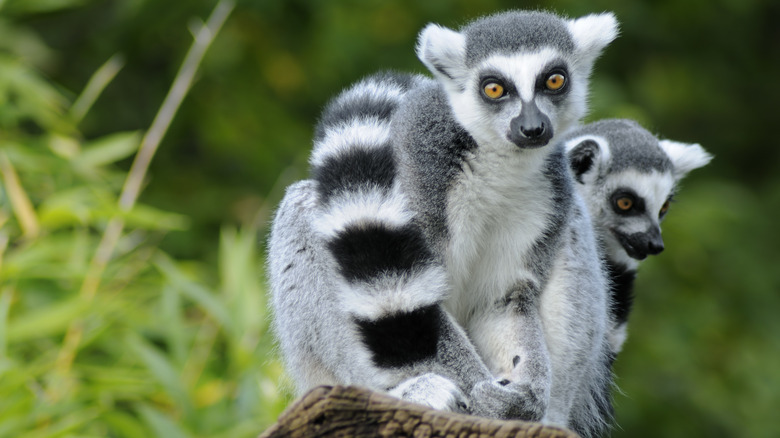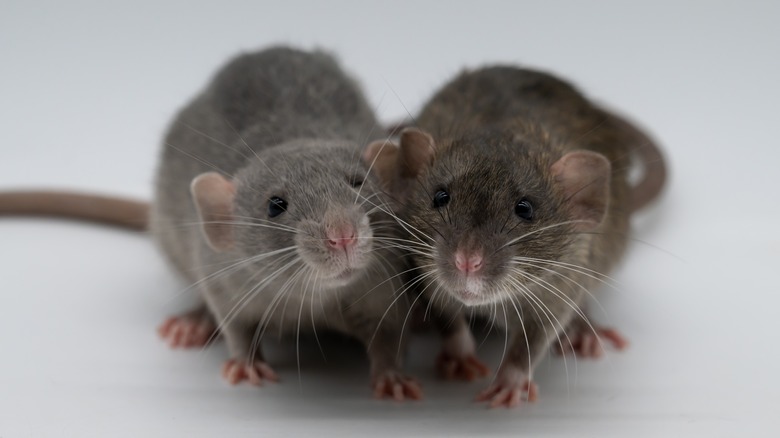Five Animals That Can Keep Time With Music
Admit it: singing and dancing animals are low-hanging fruit when it comes to grabbing people's attention, especially kids. Pop them into a film, like a cartoon from the Broadway-influenced Disney Renaissance, described on Collider — "The Little Mermaid," "Aladdin," "The Lion King" — and you've all but guaranteed a beloved character for generations to come. Before then there was Jiminy Cricket from "Pinocchio" and Baloo from "The Jungle Book." Meanwhile, Snow White and Aurora both sang to animals in the forest like Orpheus from Greek myth, the most gifted composer and singer of all time. Even if such animated films don't include a recognizable species of singing and dancing animal, they include some magical critter-type companion, like Olaf from "Frozen."
So what gives here? Do folks just really, really want to believe that their dog or cat are more human than they really are? Is it just the incongruity of seeing something like a raccoon rocking out on the guitar — a human-only activity? Does a singing plant, like that giant quasi-Venus flytrap from "Little Shop of Horrors" (via IMDb), produce the same sense of surrealism? Furthermore, do animals actually understand music at all? Rhythm, pitch, tempo, and all that?
Well, believe it or not, more research has been done on this topic than you might expect, as articles like that on BBC Science Focus recount. In the end, most animals have no clue about music. Some, however, can bounce with the beat just like anyone else.
Cockatoos can bounce with it
We're going to guess that lots of folks who've prowled the internet at some point in history might have seen that bobbing cockatoo video from 2007 featuring Snowball, the Backstreet Boys-loving bird. As we see on YouTube, Snowball had 14 distinct patterns of dance, depending on the music he listened to, which is probably more moves than most people. (Side note: Queen and Michael Jackson also ranked among his favorites.) Snowball's bobbing and stomping not only prompted a deluge of media attention, but actual scientific research published in the journal Current Biology in 2009, available on Cell.
Snowball was a sulphur-crested cockatoo, a type of parrot with a yellow mohawk-looking fan of feathers on the top of the head (pictured above). As the study published in Current Biology concluded, his movements weren't random chance. He displayed evidence of "musical beat perception and synchronization," and adjusted his moves to match a song's tempo. Researchers concluded that his understanding of rhythm is likely part-and-parcel of the same evolutionary function that allows us humans to track subtleties in voice and speech, i.e., the "vocal learning and rhythmic synchronization hypothesis." By contrast, domesticated animals like dogs have lived with humans for tens of thousands of years, but show no signs of the same skill. We can't say whether or not Snowball was more musically inclined than other cockatoos, but if other parrots don't react, they just might not like the music, as Insider reports.
Lemurs sing duets
Next up are some incredibly fuzzy, cute monkey-like creatures with striped tales and elongated noses that almost look like the muzzles of foxes: lemurs. Folks might be inclined to think that primates most similar to humans, like chimpanzees or gorillas, are more musically inclined. Lemurs, however, demonstrate a true understanding of rhythm.
As Science explains, a study from the University of Turin discovered that lemurs in the Madagascar rainforest typically sing in the morning, at 7 a.m. And when we say "sing," we mean sing in actual duets and on beat. One lemur starts a higher set of notes, and another joins in to coordinate with the first and add a "descending phrase." The two parts overlap like a simple 1:2 rhythm. Imagine "We Will Rock You" by Queen — a kick drum on one, followed by a clap on two. Or, lemurs do a simpler 1:1 rhythm where all parts stack. And it's important to note that these researchers observed lemurs in their natural habitat, not rocking out in captivity to the Backstreet Boys like Snowball the cockatoo.
And for the curious, yes, close human relatives like chimpanzees and gorillas react to music, but don't display an understanding of it. One study suggests that chimps prefer some types of music over others, and music over silence (per Psychology Today), and show individual preferences for different types of music, like rock vs. classical. Chimps bop to music, but they also bop to random, uncoordinated noise, per Science.
Elephants sway and play in time
Ah, elephants — such soulful giants. They're so soulful, in fact, that they host funereal rites for their dead, as National Geographic says. They take detours from their never-ending roaming to visit the spots where elephants died. They circle up, raise their feet, and bellow toward the sky. That's not to say that every animal who is extremely intelligent and has funereal rites is musically inclined, but we already know that elephants communicate a lot through voice. This is a characteristic they share with cockatoos, lemurs, and humans. This gives credence to the aforementioned "vocal learning and rhythmic synchronization hypothesis" cited in the journal Current Biology and published on Cell, credited for the evolution of musical comprehension in "nonhuman animals."
Admittedly, there's far less hard research into elephants' understanding of music, and a lot more of these "watch the elephant sway to the music" videos on YouTube, particularly by pianist Paul Barton. However, as far back as 1798 folks in the music world recognized the musical aptitude of elephants, per Ludwig van Toronto. Back then, an orchestra at the Conservatoire de Musique in Paris performed pieces with elephants, and those elephants kept rhythm by swaying in time with various pieces. Furthermore, Columbia University neurologist David Sulzer co-founded the Thai Elephant Orchestra in Thailand, per Columbia News, a music group made of 16 elephants that play instruments like the steel drum and harmonica. The elephants improvise music on beat "more accurately than their human counterparts."
Dolphins are basically living metronomes
It's well known at this point how intelligent dolphins are: They use tools, memorize lists, learn patterns, and are heavily reliant on sound for communication. Except when they surface, they and other marine mammals like whales dwell in a dark, murky realm where sound is the chief tool to reach out to others. The Journal of the Acoustical Society of America published a study (posted at the National Library of Medicine) saying that dolphins could hear underwater whistles up to two kilometers away. Sciencing describes the unbelievable hearing range of dolphins, from 20Hz all the way to 150 KHz. Humans, for example, can only hear frequencies from 20 Hz to 20 KHz — seven times less. And dogs, with their much-ballyhooed hearing? Only about 40 Hz to 60 kHz, as Hidden Hearing cites.
Even though dolphins can communicate across a huge range of frequencies, they prefer communicating at higher frequencies. It comes as no shock that they prefer high-pitched human instruments like the flute, piccolo and Indian wooden recorder, as Science ABC says. But as this video on YouTube shows, they're also down with clarinets. They match the rhythm and bark along to it better than lots of human drummers keep time. Like elephants, there's less hard research into dolphins' musical aptitude. But if the dolphin in the aforementioned video is any indication of things, then dolphins can discern and count rhythm as well as, if not better than, any other entry on this list.
Rats bop to the beat
And finally, we come to an entry on this list of musically gifted animals that many people might find surprising: rats. When not carrying flea-bearing plagues, ducking into sewers, or dragging slices of pizza into the subway, rats are often used for all kinds of research. Reason being, as the Journal of the Missouri State Medical Association says (via the National Library of Medicine), rats, mice, and humans share 95% of the same genes. That's only 1% less similar than gorillas, as The Guardian cites. So might they also share some of our musical traits while doing all of that adorable peeping and squeaking with their little whiskers? It took a long time to find out, but a very recent study says yes.
Classic FM cites a study conducted by the University of Tokyo and published in the journal Science Advances. The study equipped 10 rats with "wireless, miniature accelerometers" to track head movements. While 10 rats isn't what we'd call an amazing sample size, researchers still discovered that the rats bopped their heads to the study's musical selections: Mozart's "Sonata for Two Pianos in D Major," Lady Gaga's "Born this Way," Queen's "Another One Bites the Dust," Michael Jackson's "Beat It," and Maroon 5's "Sugar." In this case, the choice of music mattered less than the music's tempo. Researchers sped up and slowed down tracks, and found that the rats preferred 132 beats per minute, specifically.





